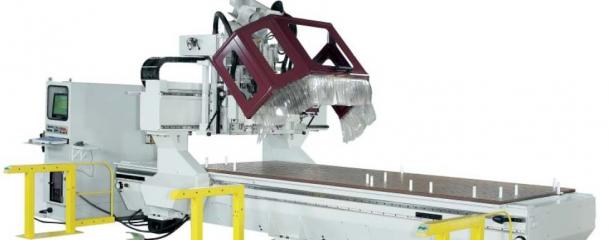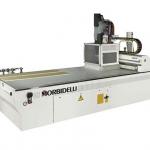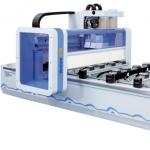Moving gantry machineUsed as term for a design of CNC-machining centres. It is a special form of portal machines. Also, the term "real moving gantry" is used to differentiate from machines driven on both sides. In moving gantries a linear axis is realized by a portal, driven on both sides, moving above a fixed table (mostly the X-axis). At the portal an aggregates support is mounted that is driven by an additional linear axis (mostly Y). In "real moving gantries" both sides of the portal are driven by synchronized motors. There are cheaper possibilities, where only one single motors drives the protal by gearboxes or belts. This may cause transmission losses. There is a special variation based on the design of a cantiliver machine. Thereby the cantilever is ride-stabilized by a support. But this is not a driving portal in the real sense. Advantages
DisadvantagesIn a real gantry machine, both sides of the portal are driven synchronized and by separate motors to achieve the best possible positioning accuracy. This is relatively complex and therefore expensive. Some manufacturers solve this in a more inexpensive way using a central drive, which is transferred to both sides of the portal. However, this includes the risk of transmission losses and inaccuracies. Alternative terms
|
CNC machining centres, robots895
Edgebanding, edge processing622
Saws, cutting machines438
Planers, 4-sided moulders188
Routers, shapers, tenoners, profilers179
Drilling, mortising machines133
Presses, clamps, joining machines202
Sanding machines323
Mechanisation, storage, packing technology198
Surface coating149
Production lines125
Heating, drying, waste chopping63
Dust extraction, compressed air, vacuum139
Assembly, worktables15
Lathes29
Tools, sharpening technology99
Equipment, Other machines124



